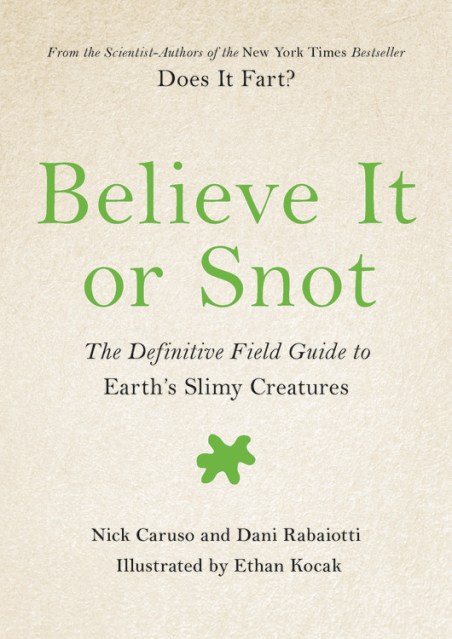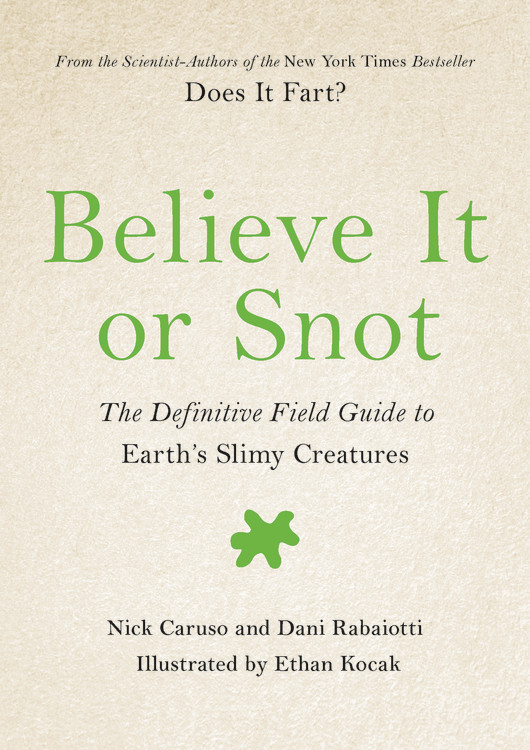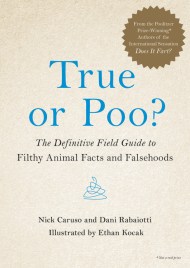Promotion
Use code MOM24 for 20% off site wide + free shipping over $45
Believe It or Snot
The Definitive Field Guide to Earth's Slimy Creatures
Contributors
By Nick Caruso
Formats and Prices
Price
$16.00Price
$22.00 CADFormat
Format:
- Hardcover $16.00 $22.00 CAD
- ebook $9.99 $12.99 CAD
- Audiobook Download (Unabridged)
This item is a preorder. Your payment method will be charged immediately, and the product is expected to ship on or around October 22, 2019. This date is subject to change due to shipping delays beyond our control.
Also available from:
From the scientist duo behind the New York Times bestselling sensation Does It Fart? and their excremental follow up True or Poo?, Believe It Or Snot explores the myriad variety of slime in the animal and plant kingdoms.
Your little brother isn’t the only nose-picking animal.
What is hyena butter and would it be appropriate to spread on toast? Why is giraffe saliva such a good lubricant? How does some mollusk mucus work like a fishing pole? And what’s the deal with pygmy sperm whales’ “anal syrup?”
In Believe It or Snot, scientists and bestselling authors Nick Caruso and Dani Rabaiotti detail the slimy secrets of 80 organisms that ooze, drip, dribble, and splatter. Not quite a solid but firmer than a liquid, slime is used by plants and animals for defense, respiration, movement, feeding, communication, and even reproduction. Slime, you might say, is the glue that holds our world together.
But that leaves an important question: which creature is earth’s slimiest?
In this book, the authors dive into the goo and come up with a definitive ranking of earth’s slimiest creatures-while offering up a plethora of facts about the natural world’s ooze, gunge, sludge, gunk, and goop.
Genre:
- On Sale
- Oct 22, 2019
- Page Count
- 160 pages
- Publisher
- Hachette Books
- ISBN-13
- 9780306846144
Newsletter Signup
By clicking ‘Sign Up,’ I acknowledge that I have read and agree to Hachette Book Group’s Privacy Policy and Terms of Use







